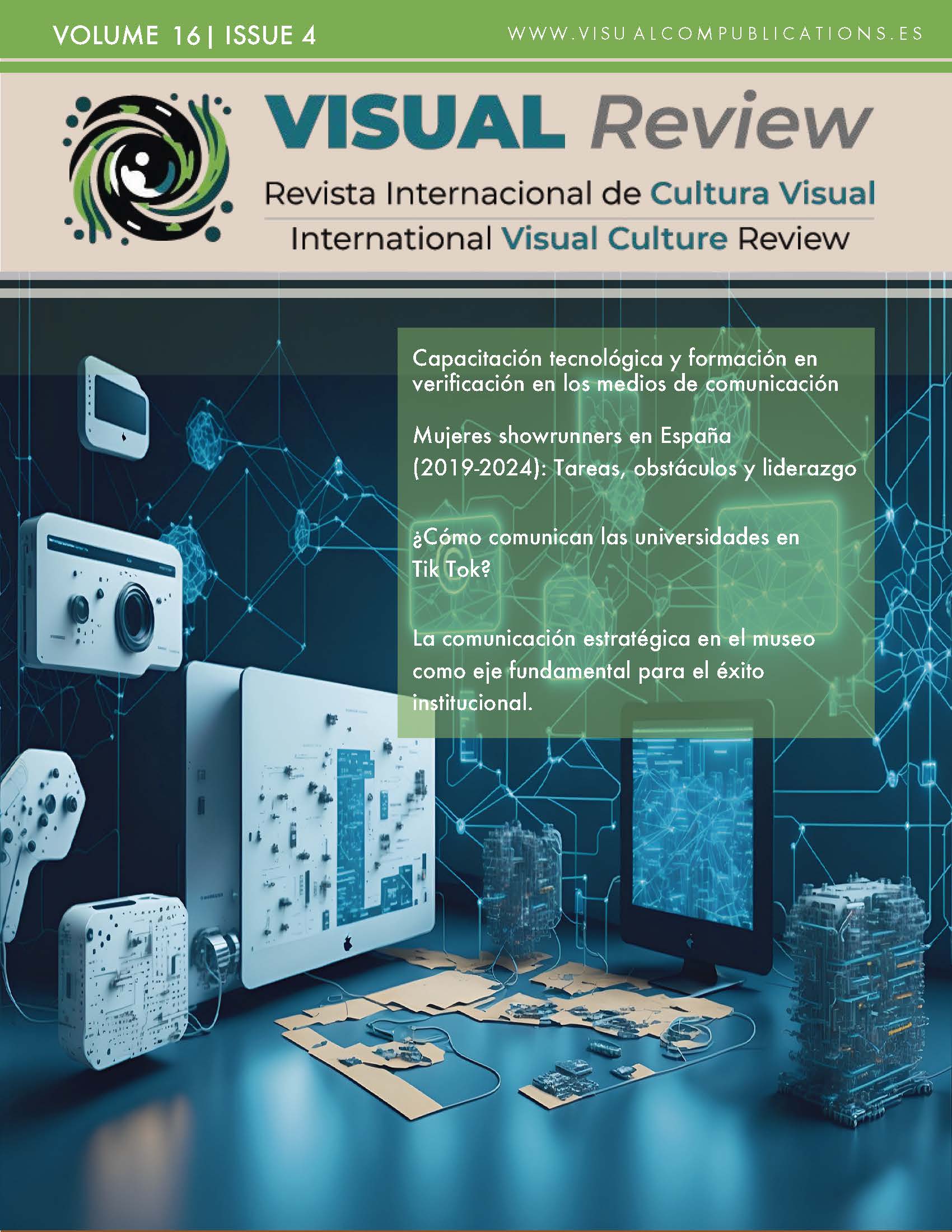How do universities communicate on Tik Tok?
DOI:
https://doi.org/10.62161/revvisual.v16.5275Keywords:
Universities, TikTok, Institutional Communication, Digital Communication, Branding, GenzAbstract
To determine how universities worldwide use TikTok, 7,880 TikTok posts from 118 institutional university profiles were reviewed and categorized through a systematic review. The results show an initial effort by universities to search for institutional content, although from 2021 onwards an increase in playful content focused on the university community is reported, making evident the need to exploit the platform with the corresponding narrative style, aesthetics, and particular times, thus connecting more efficiently with its target audience and betting on consolidating this community both in the real and digital terrain.
Downloads
Global Statistics ℹ️
|
724
Views
|
151
Downloads
|
|
875
Total
|
|
References
Baynes, T. D. (2019). More than a spasm, less than a sign: Queer masculinity in American visual culture, 1915-1955. [Doctoral thesis] The University of Western Ontario. Electronic Thesis and Dissertation Repository. 6238. https://ir.lib.uwo.ca/etd/6238
Clare, R. (2021). Ancient Greece and Rome in videogames. Representation, play, transmedia. Bloomsbury Academic. DOI: https://doi.org/10.5040/9781350157224
Cohen, D. & Anderson S. (2021). A Visual Language. Bloomsbury Publishing.
Delicado, A. & Rowland, J. (2021, May 7). Visual representations of science in a pandemic: COVID-19 in images. Front. Commun. https://doi.org/10.3389/fcomm.2021.645725 DOI: https://doi.org/10.3389/fcomm.2021.645725
Kavka, M. (2019). From the “Belfie” to the Death-of-Me: The Affective Archive of the Self/ie. In J. Riquet & M. Heusser (Eds), Imaging identity. Text, mediality and contemporary visual culture (pp. 35-59). Palgrave Macmillan. https://doi.org.10.1007/978-3-030-21774-7. DOI: https://doi.org/10.1007/978-3-030-21774-7_2
Kinder, M. & McPherson, T. (Eds.). (2021). Transmedia frictions: The digital, the arts, and the humanities. University of California Press.
McSwiney, J., Vaughan, M., Heft A. & Hoffmann, M. (2021) Sharing the hate? Memes and transnationality in the far right’s digital visual culture. Information, Communication & Society, https://doi.og/10.1080/1369118X.2021.1961006 DOI: https://doi.org/10.1080/1369118X.2021.1961006
Millepied, B. (Director). (2020). Dance of Dreams [Film]. Sony/ATV Harmony.
Mirzoeff, N. (2011). The right to look: A counterhistory of visuality. Duke University Press. DOI: https://doi.org/10.1215/9780822393726
Mirzoeff, N. (2017). The appearance of Black Lives Matter. NAME Publications.
Newbury, D., Rizzo, L., & Thomas, K. (2020). Women and photography in Africa: Creative practices and feminist challenges. Routledge. DOI: https://doi.org/10.4324/9781003087410
Spyer, P. (2021). Orphaned landscapes: violence, visuality, and appearance in Indonesia. Fordham Universities Libraries. DOI: https://doi.org/10.2307/j.ctv1t1kf84
Verstappen, S. (2021, January 14). Hidden behind toilet rolls: visual landscapes of COVID-19. Focaal: Journal of Global and Historical Anthropology. https://bit.ly/3JKqdgw
Vilela, R. (2021, May 19) A collective of Latin American photographers tell the stories of their countries during the pandemic. The Washington Post.
Downloads
Published
How to Cite
Issue
Section
License
Copyright (c) 2024 VISUAL REVIEW. International Visual Culture Review / Revista Internacional de Cultura Visual

This work is licensed under a Creative Commons Attribution-NoDerivatives 4.0 International License.
Those authors who publish in this journal accept the following terms:
-
Authors retain copyright.
-
Authors transfer to the journal the right of first publication. The journal also owns the publishing rights.
-
All published contents are governed by an Attribution-NoDerivatives 4.0 International License.
Access the informative version and legal text of the license. By virtue of this, third parties are allowed to use what is published as long as they mention the authorship of the work and the first publication in this journal. If you transform the material, you may not distribute the modified work. -
Authors may make other independent and additional contractual arrangements for non-exclusive distribution of the version of the article published in this journal (e.g., inclusion in an institutional repository or publication in a book) as long as they clearly indicate that the work was first published in this journal.
- Authors are allowed and recommended to publish their work on the Internet (for example on institutional and personal websites), following the publication of, and referencing the journal, as this could lead to constructive exchanges and a more extensive and quick circulation of published works (see The Effect of Open Access).













